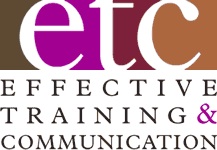When was the last time you held a team brainstorming meeting to identify a name for a new product, solve some problem or even a come up with a location for the next staff happy hour … and you got nothing? You asked for input, but only a few spoke up and others criticized or made fun of those ideas. Most people just sat there silent starring at their blank sheets of paper … or, phones. One person had enough courage to tell you that you’re the boss and you’ll do whatever you want anyway, so why bother with this waste of time?
Hmmm … doesn’t sound like a very empowered or dynamic team, now does it? But, not to worry. These five simple Brainstorming Brilliance strategies can improve your results the next time you need creative input from your team.
1.Truly value team input
- Start with creating a culture where people are truly respected and valued for their experience and expertise, for their contributions and their efforts.
- Describe the details of your new approach to brainstorming before trying it out. Since they’ll be skeptical at first, you’ll need ultimately prove it will work for them.
- Keep senior management posted on the quality your brainstorming results and also periodically include comments in individual personnel files.
2.Embrace different methods
- Embrace a new methodology for Brainstorming Brilliance. it isn’t new at all. Just maybe new for you.
- Divide it into two separate phases – Ideation and Evaluation, often separated by a short break, several hours or even days.
- During Ideation, people identify as many ideas, suggestions, names, etc. as possible in a reasonably short time. Define parameters or outcomes for the result up front so people can start with the end in mind.
- Ensure non-judgemental participation. No one can comment on any other idea. Even the leader/boss. Especially the leader/boss.
- Facilitation is critical for success here. Savvy leaders often bring in trained facilitators from different departments or even outside consultants to lead the effort.
- Not allowing negative comments during ideation should be obvious, but positive comments can have a similar effect of limiting additional input or discouraging really ‘out there’ ideas.
- Only allow people to ask for clarification or offer a spin-off on a previous comment without judging. Someone suggested ‘A’. Someone else can then suggests ‘A plus B’.
- Once the amount of input slows down or stops, the facilitator reads the list, again without judgement.
3.Thinkers vs. Talkers
- Every team has two kinds of people, based on their fundamental communication style, comfort zone and personality.
- The Talkers are more extroverted, happy to be in the spotlight and showing off how smart or creative they are. They’re known for talking before they’ve thought out what to say.
- The Thinkers are more introverted, happy to avoid the spotlight and not comfortable showing off at all. They tend to over-think what to say and usually miss the opportunity to add to the dynamic conversation. But, thinkers often have much value to contribute … if we’d let them.
- A strategy I call ‘Write first, then talk’ works most of the time to deal with that issue. Define the outcome of the brainstorming process up front very clearly. Ask everyone to spend five minutes writing down their ideas, solutions or comments … in silence!
- This simple technique tends to level the playing field and makes it easier for the Thinkers to feel more comfortable contributing. They may only have two items, but those two may be better than the eight the Talkers wrote down in a hurry without even re-reading the instructions.
4.Allow ‘Cook Time’
- The ‘Write first’ technique allows a few minutes for the creative process to germinate. We can’t be very creative spontaneously. While we can hit the ground running, it’s hard to hit the ground creating. So, allow even more ‘cook time’.
- Define the purpose and outcome in a team email Tue. morning that invites people to a Thu. afternoon meeting prepared to share their ideas.
- As we increase cook time, we see a corresponding increase in both quality and quantity of ideas generated. Just don’t wait too long or the Talkers will get bored and shut down.
5.Going from 10 to 1
- Time for Evaluation. So, you now have a list of 25 names for the new product. Next, you eliminated those that don’t meet the defined criteria or parameters set out up – those that were already in use, copyrighted, registered, etc. You now have 10 names that made the above cuts but you need to get them down to the best one.
- Simplest method – two or three rounds of secret ballots, with each person getting one vote and the top three or four moving on to the next round.
- Interesting method – give each person three votes which can be cast for three separate items or all for one. This will really find out where people’s passions lie.
- Colorful method – list the 10 finalists on a large pad sheet and give each person 3 colored dots to cast as votes. Same as above – all on one or spread around. Livens up the process where secrecy isn’t necessary.
- Engaging method – allow participants two minutes to pick the one they like most and the least and describe why to the group. Can indirectly sharpen members’ persuasive communication skills and confidence … without them knowing it.
- Job done – 10 down to one with everyone equally happy … or equally unhappy. Use a different method based on specific circumstances.
So, there it is … five strategies for Brainstorming Brilliance. Simple to understand, but the devil is in the details of implementation. So, don’t tell me that these strategies won’t work until you can tell me that they didn’t.
Happy Brainstorming with Brilliance!

